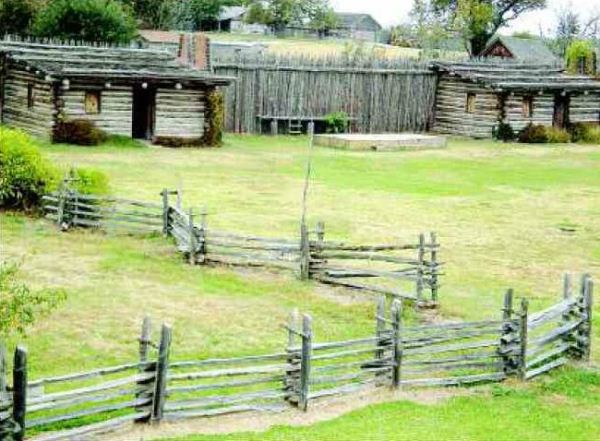Milam County Historical Commission
Milam County, Texas
Milam County, Texas






Experience Fort Parker
BRENNAN K. PEEL
Temple Daily Telegram - November 15, 2010
Many native Texans know the story of Cynthia Ann Parker, the white settler captured by
Comanche Indians in 1836, and her son, Quanah Parker, who later would lead the Comanche
Nation into a peaceful relationship with white settlers. Far fewer people have visited
the place where the tale began.
Old Fort Parker, four miles north of Groesbeck, was built in 1833 by eight or nine
families from Illinois. On May 19 of 1836 ó the year Texas became a state, Darwin
returned from his journeys on the H.M.S. Beagle and Samuel Colt invented the revolver
pistol ó about 500 Comanche and Kiowa Indians attacked the fort while most of the men
were away working in nearby fields.
Benjamin Parker, still at the fort, approached the band in friendship, but he and four
other men were killed. The raid left most of the settlers dead, and Comanches captured
two women and three children. Of those, three were quickly ransomed and returned to
their surviving families.The two children who remained with the Comanche both were
Parkers.
John Parker, 6, grew up to be a Comanche warrior. He later married a Mexican woman
captured during a raid and eventually settled on a ranch in Mexico.
His sister, Cynthia Ann, 9, lived with a separate Comanche band. She resisted several
ransom attempts, preferring her new way of life with the Comanche over the white
settler lifestyle. She ultimately married a Comanche chief, Peta Nocona.
In 1860 she was recaptured by white settlers at the Battle of the Pease River, near
Magaret. She had three children, one of whom was captured with her. Yet neither could
adjust to the settlerís ways, and soon Parkerís daughter died. A few years later,
Cynthia Ann Parker died.
Her son, Quanah, grew up to be a Comanche chief. He led successful war campaigns for
much of his life. Later, he became an astute businessman and judge, and fostered
peaceful relationships between the Comanche Nation and the U.S.government.
That well-known story is on
display in a tangible way at the fort today. Visitors may climb the blockhouses, which
were the defensive strong-holds of the fort and get a first-person view of what an
1830s cabin really looked like inside. Several cabins have been reconstructed, complete
with dining room tables and bedding circa the fortís original building.
While the wooden structures date back to the late 1960s, the time the fort was last
refurbished, the layout remains the same since the first board was erected more than
170 years ago.
bpeel@tdtnews.com
If you go:
Admission: A suggested donation of $2 for adults, $1 for youth ages 6-11.
Activities: Camping and trail rides are available for a fee.
Directions: Old Fort Parker is located between Mexia and Groesbeck about one mile off
Highway 14 and Park Road 35. The fort is about 40 miles east of Waco.
Hours: 9 a.m. to 5 p.m. Wednesday through Sunday (closed Christmas Day and New Yearís
Day)
Information: Call 254-729-5253 or go to the website at www.oldfortparker.org
All articles from the Temple Daily Telegram are published with the permission of the
Temple Daily Telegram.
All credit for this article goes to
Brennan K. Peel and the Temple Daily Telegram
Temple Daily Telegram.
All credit for this article goes to
Brennan K. Peel and the Temple Daily Telegram

Old Fort Parker, north of Groesbeck, was built in the 1830s and last refurbished in 1967. The Fort housed white settlers from Illinois, who moved to the site when Texas was still part of Mexico.
Photo by Brennan K. Peel
.
.